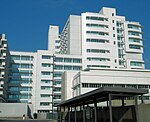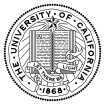| 220px | |
| Motto | To provide accessible, high quality learning experiences to meet the educational needs of the San Diego community. |
|---|---|
| Type | Public community college |
| Established | 1972 |
| Endowment | $779.6 million [2] |
| Chancellor | Constance M. Carroll |
Academic staff | 2,514 |
| Undergraduates | 134,400 |
| Location | , , |
| Campus | 3 community college campuses, 6 continuing education campuses. |
| Colors | Blue & White |
| Website | www.SanDiegoCommunityColleges.edu |
| 220px ^ Source: [1] | |
The San Diego Community College District (SDCCD) is a public community college district in the city of San Diego, California. The district is part of the greater California Community College System. Under the California Master Plan for Higher Education, the San Diego Community College District is a part of the state's three-tier public higher education system, which also includes the University of California system and California State University system.
The San Diego Community College District has a combined student body of more than 134,400 students.
Its first campus, San Diego City College, was founded in 1914, while its tenth and newest campus, UC Merced, opened for classes in fall 2005. Nine campuses enroll both undergraduate and graduate students; one campus, UCSF, enrolls only graduate and professional students in the medical and health sciences. In addition, the independently administered UC Hastings [2] — located in San Francisco but not part of the UCSF campus — enrolls only graduate and professional students in legal studies.
The University of California's campuses boast large numbers of distinguished faculty in almost every field. Eight of its undergraduate campuses are ranked among the top 100, six among the top 50, and two among the top 25 U.S. universities by the U.S. News and World Report.
History
This History needs additional citations for
verification. (November 2009) |
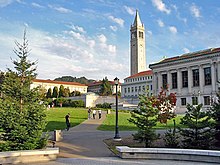
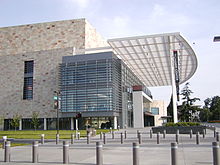

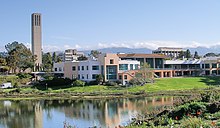
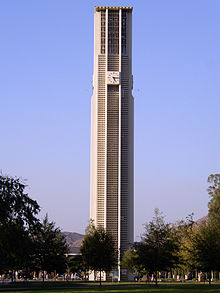


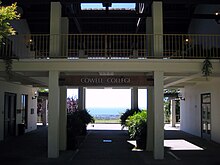


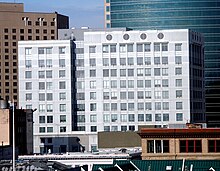
In 1849, the state of California ratified its first constitution, which contained the express objective of creating a complete educational system including a state university. Taking advantage of the Morrill Land Grant Act, the California Legislature established an Agricultural, Mining, and Mechanical Arts College in 1866. Although this institution was provided with sufficient funds, it lacked land.
Meanwhile, Congregational minister Henry Durant, an alumnus of Yale, had established the private Contra Costa Academy, on June 20, 1853 in Oakland, California. The initial site was bounded by Twelfth and Fourteenth Streets and Harrison and Franklin Streets in downtown Oakland. In turn, the Trustees of the Contra Costa Academy were granted a charter on April 13, 1855 for a College of California. State Historical Plaque No. 45 marks the site of the College of California at the northeast corner of Thirteenth and Franklin Streets in Oakland. Hoping both to expand and raise funds, the College of California's trustees formed the College Homestead Association and purchased 160 acres (650,000 m²) of land in what is now Berkeley in 1866. But sales of new homesteads fell short.
Governor Frederick Low favored the establishment of a state university based upon the University of Michigan plan, and thus in one sense may be regarded as the founder of the University of California. In 1867, he suggested a merger of the existing College of California with the proposed state university. On October 9, 1867, the College's trustees reluctantly agreed to merge with the state college to their mutual advantage, but under one condition — that there not be simply a "Agricultural, Mining, and Mechanical Arts College," but "a complete university," within which the College of California would become the College of Letters (now the College of Letters and Science). Accordingly, the Organic Act, establishing the University of California, was signed into law by Governor Henry H. Haight (Low's successor) on March 23, 1868. [3]
The University of California's second president, Daniel Coit Gilman, opened the Berkeley campus in September 1873. Earlier that year, Toland Medical College in San Francisco had agreed to become the University's "Medical Department"; it later evolved into UCSF. In 1878, the University established its first law school in San Francisco with a US$100,000 gift from Serranus Clinton Hastings; it is now Hastings College of the Law.
In 1905, the Legislature established a "University Farm School" which would be located at Davis and in 1907 a "Citrus Experiment Station" at Riverside as adjuncts to the College of Agriculture at Berkeley. In 1959, the Legislature promoted the "Farm" and "Experiment Station" to the rank of "general campus," creating, respectively, UC Davis and UC Riverside.
In 1919, the Legislature arranged for an existing normal school in Los Angeles to become the University's "Southern Branch." In turn, the Southern Branch became UCLA in 1927. In 1944, the former Santa Barbara State College—renamed UC Santa Barbara--became the third general-education campus of the University of California system.
The San Diego campus was founded as a marine station in 1912 and became UCSD in 1959. Campuses were established at Santa Cruz and Irvine in 1965. UC Merced opened in fall 2005.
The California Master Plan for Higher Education of 1960 established that UC select from the top 12.5% (one-eighth) of graduating high school seniors in California. Prior to the promulgation of the Master Plan, UC was to select from the top 15%. The university doesn't follow all tenets of this plan, such as the stricture that no campus is to exceed 27,500 in enrollment to ensure quality. Three campuses, Berkeley, UCLA, and Davis, all currently enroll over 30,000.
According to Spanish newspaper reports, UC representatives have visited Madrid, Spain to discuss the possibility of opening UC's first general campus outside of the U.S. there in 2014. [4] [5]
Academics
UC researchers and faculty are responsible for 5,505 inventions and 2,497 patents. UC researchers create 3 new inventions per day. [6]
The University of California and most of its campuses are members of the Association of American Universities (AAU). Collectively, the system counts among its faculty (as of 2002):
- 389 members of the Academy of Arts and Sciences
- 5 Fields Medal recipients
- 19 Fulbright Scholars
- 25 MacArthur Fellows
- 254 members of the National Academy of Sciences
- 91 members of the National Academy of Engineering
- 13 National Medal of Science Laureates
- 37 Nobel laureates. Nobel laureates are present at all campuses except Davis, Merced, and Santa Cruz. This is the largest number of on laureates at any university. [7]
- 106 members of the Institute of Medicine
Eight campuses operate on the quarter system, while Berkeley and Merced are on the semester system. However, the David Geffen School of Medicine at UCLA and all UC law schools operate on the semester system.
UC Libraries
At 34 million items, [8] the University of California library system contains one of the largest collections in the world. Each campus maintains its own library catalog and also participates in the systemwide union catalog, MELVYL. Besides on-campus libraries, the UC system also maintains two regional library facilities (one each for Northern and Southern California) which each accept older items from all UC campus libraries in their respective region. As of 2007, Northern Regional Library Facility is home to 4.7 million volumes, while SRLF is home to 5.7 million.
Governance
The University of California is governed by the Regents of the University of California, as required by the current Constitution of the State of California. Eighteen regents are appointed by the governor for 12-year terms. One member is a student appointed for a one-year term. There are also 7 ex officio members — the Governor, Lieutenant Governor, Speaker of the Assembly, Superintendent of Public Instruction, president and vice president of the Alumni Associations of UC, and the UC President. According to a recent report issued by the Western Association of Schools and Colleges, the UC system has "significant problems in governance, leadership and decision making," with much "confusion about the roles and responsibilities of the university president, the regents and the 10 campus chancellors with no clear lines of authority and boundaries." [9]
The Academic Senate, made up of faculty members, is empowered by the Regents to set academic policies. In addition, the system-wide faculty chair and vice-chair sit on the Board of Regents as non-voting members.
Originally the President was directly in charge of the first campus, Berkeley, and in turn, all other UC locations (with the exception of Hastings College of the Law) were controlled by the Berkeley campus. In 1952, the system was reorganized so that day-to-day " chief executive officer" functions for each campus were transferred to Chancellors who were entrusted with a high degree of autonomy. In turn, all Chancellors (again, with the exception of Hastings) report as equals to the UC President. Today, the UC Office of the President and the Office of the Secretary of the Regents of the University of California share an office building in downtown Oakland which serves as the UC system's headquarters.
Besides substantial six-figure incomes, the UC President and all UC chancellors enjoy a number of controversial perks, such as free housing in the form of university-maintained mansions. [10] In 1962, Anson Blake's will donated his 10-acre (40,000 m2) estate ( Blake Garden) and mansion (Blake House) in Kensington to the University of California's Department of Landscape Architecture. In 1968, the Regents decided that Blake House would become the official residence of the UC President. As of 2005, it currently costs around US$300,000 per year to maintain Blake Garden and Blake House; the latter, built in 1926, is a 13,239-square-foot (1,229.9 m2) mansion with a view of San Francisco Bay. [10]
All UC chancellors traditionally live for free in a mansion on or near campus that is usually known as University House, where they are required to frequently host social functions attended by wealthy donors and distinguished guests. [11] UCSD's University House has been closed since 2004 due to mold and severe structural deficiencies; renovation attempts have been severely slowed by the discovery that the home sits on top of legally protected Native American burial remains. [12]
UC Presidents
|
|
On 13 August 2007, President Dynes announced that he would step down effective June 2008, or until his replacement was selected. However, he also announced that Provost Wyatt (Rory) Hume would take over as the system's chief operating officer, effective immediately. Three state lawmakers had publicly demanded his resignation for his handling of the executive pay compensation scandal that stemmed from UC system Provost M.R.C. Greenwood's violation of UC conflict-of-interest rules. (She had created a management job at UC headquarters for a friend with whom she owned rental property, and a subordinate, Winston Doby, improperly helped create a highly-paid year-long internship for her son at UC Merced.) [13] [14] [15]
Incoming President Mark Yudof took over on June 16, 2008. [16]
Finances
The state of California currently spends US$3.3 billion or 3.2% of its annual budget on the UC system. In May 2004, UC President Robert C. Dynes and CSU Chancellor Charles B. Reed struck a private deal, called the "Higher Education Compact," with Governor Schwarzenegger. They agreed to slash spending by about a billion dollars (about a third of the University's core budget for academic operations) in exchange for a funding formula lasting until 2011. The agreement calls for modest annual increases in state funds (but not enough to replace the loss in state funds Dynes and Schwarzenegger agreed to), private fundraising to help pay for basic programs, and large student fee hikes, especially for graduate and professional students. A detailed analysis of the Compact by the Academic Senate "Futures Report" indicated, despite the large fee increases, the University core budget would not recover to the levels it was at in 2000. [17] Undergraduate student fees have risen 90% from 2003 to 2007. [18]
The First District Court of Appeal in San Francisco recently ruled that the University of California owes nearly US$40 million dollars in refunds to about 40,000 students who were promised that their tuition fees would be held steady but were hit with increases when the state ran short of money in 2003. [19]
Faculty pay
Salaries for UC faculty increased in late 2007 and are slightly higher than in the California State University system. As of September, 2007 instructors earn up to $53,200, assistant professors up to $69,200, associate professors up to $97,100 and full professors up to $164,700. [20] According to the 2007 - 2008 payscale, the following pay ranges apply per fiscal year with Cost-of-Living-Adjustments (COLA): [21]
| Position | Salary range | Maximum off-scale limit |
| Lecturer | $50,292 - $140,724 | N/A |
| Senior lecturer | $92,400 - $140,724 | N/A |
| Assistant Professor | $53,200 - $69,200 | $90,000 |
| Associate Professor | $66,100 - $83,700 | $111,700 |
| Full Professor | $77,800 - $142,700 | $178,600 |
However, for 2009–2010, most faculty members and UC staff are furloughed up to 10% of their salary.[ citation needed]
Campuses and rankings
At present, the UC system officially describes itself as a "ten campus" system consisting of the campuses listed below. [22] These campuses are under the direct control of the Regents and President.[ citation needed] Only ten campuses are listed on the official UC letterhead. [23]
Although affiliated with the UC system, the Hastings College of Law is not controlled by the Regents or President; it has a separate board of directors and must seek funding directly from the Legislature. However, under the California Education Code, the Juris Doctor from Hastings is awarded in the name of the Regents and bears the signature of the President. [24] Furthermore, Education Code section 92201 states that Hastings "is affiliated with the University of California, and is the law department thereof." [25]
Some campuses are known around the world. UCLA is so well-known in Asia that the university has licensed its trademark to 15 UCLA-branded stores across East Asia. [26]
| Campus | Acreage [27] | Founded | Enrollment [28] | Endowment [29] | Operations [30] | Athletics Nickname | USNews [31] | ARWU [32]. | NSF [33] | Wash. Monthly [34] | NCAA Category |
|---|---|---|---|---|---|---|---|---|---|---|---|
| Berkeley | 1,600 | 1868 | 33,558 | US$2.34 billion | 1.59 billion | Golden Bears | 22 | 003 | 015 | 02 | Div I Pac-10 |
| Davis | 3,697 | 1908 | 29,637 | US$0.54 billion | 2.27 billion | Aggies | 39 | 049 | 017 | 10 | Div I Big West |
| Irvine | 1,400 | 1965 | 25,024 | US$0.21 billion | 1.42 billion | Anteaters | 41 | 046 | 058 | 44 | Div I Big West |
| Los Angeles | 419 | 1919 | 37,221 | US$1.88 billion | 3.39 billion | Bruins | 25 | 013 | 004 | 03 | Div I Pac-10 |
| Merced | 910 [35] | 2005 | 2,700 | US$0.02 billion | 0.07 billion | Golden Bobcats | Not Ranked | N/A | N/A | N/A | N/A |
| Riverside | 1,160 | 1954 | 20,746 | US$0.11 billion | 0.46 billion | Highlanders | 94 | 101-151 | 113 | 16 | Div I Big West |
| San Diego | 2,124 | 1960 | 25,938 | US$0.43 billion | 2.08 billion | Tritons | 35 | 014 | 006 | 01 | Div II CCAA |
| San Francisco | 135 | 1873 | 4,174 | US$1.11 billion | 2.48 billion | Bears | 4 (Med-Research), 5 (Med-Primary Care) [36] | 018 | 005 | N/A | N/A |
| Santa Barbara | 990 | 1909 | 21,016 | US$0.15 billion | 0.62 billion | Gauchos | 39 | 032 | 016 | 11 | Div I Big West |
| Santa Cruz | 2,950 | 1965 | 15,012 | US$0.09 billion | 0.45 billion | Banana Slugs | 72 | 101-151 | 123 | 56 | Div III independent |
In 2008 the University of California was awarded the Sustainability Showcase Award from the California Sustainability Alliance. The Alliance recognized the UC system for their innovative sustainable and green practices, programs and policies. [37]
The 2009 issue of US News & World Report Best Colleges-National Universities recognized UC Riverside (9th), UC Irvine (14th) and UC San Diego (14th) in its "up and coming universities" to watch for rankings.
UCLA, Berkeley, and Santa Cruz were named in the top 20 gay-friendly campuses in the nation by The Advocate magazine. [38]
UC Berkeley, UCLA, UC San Diego, and UC Davis were named by the magazine Washington Monthly as four of top 10 campuses in the country based on social mobility and community service. [39]
Administration
While the UC campuses are operated fairly efficiently, some—especially UC Berkeley—do have a reputation among their students and alumni for mediocre customer service. [40] [41] The most common symptoms are the long lines which students often must stand in to get even the simplest administrative tasks accomplished, the long wait times before phone calls are answered, and the overcomplicated paperwork that is often required. In August 1990, UC Berkeley attempted to ease the tedium of standing in line by setting up televisions which showed comedians making jokes about standing in line. [42]
Labor unions
There are a total of about 180,000 employees in the UC state system. [43] Most UC employees beside faculty and administration are represented by labor unions. Unions in the UC system include: [44]
- University Professional and Technical Employees (UPTE) - health care, technical and research workers
- Coalition of University Employees (CUE) - clericals
- University Council-American Federation of Teachers (UC-AFT) - faculty and librarians
- United Auto Workers UAW - Academic student employees
- American Federation of State, County and Municipal Employees (AFSCME) - service workers and patient care technical employees.
- California Nurses Association (CNA) - Nurses
- Society of Professionals, Scientists and Engineers - UC Scientists and Engineers at Lawrence Livermore National Laboratory
Admissions
Each UC school handles admissions separately, but a student wishing to apply for undergraduate admission uses one application for all UCs. If it is not already in electronic form, the application is then scanned into a computer and distributed to the individual campus undergraduate admission offices. Graduate and professional school admissions are handled directly by each department or program to which one applies.
Prior to 1986, students who wished to apply to a UC for undergraduate study could only apply to one campus. If the student was rejected at that campus, but otherwise met the UC minimum eligibility requirements, he or she would be redirected to another campus with available space. For students who did not wish to be redirected, the application fee was returned. In 1986, that system was changed to the current "multiple filing" system, in which a student can apply to as many or as few UC campuses as he or she wants on one application, paying a fee for each campus. This system significantly increased the numbers of applications to the Berkeley and Los Angeles campuses, since students could choose which campus they wanted to attend after they received acceptance letters, without the fear of being redirected to a campus they did not want to attend.
The University of California accepts fully eligible students from among the top eighth of California public high school graduates through regular statewide admission, or the top 4% of any given high school class through Eligibility in the Local Context (see below). All eligible California high school students who apply are accepted to the University, though not necessarily to the campus of choice. [45] [46] Eligible students who are not accepted to the campus(es) of their choice are placed in the "referral pool", where campuses with open space may offer admission to those students; in 2003, 10% of students who received an offer through this referral process accepted it. [47] In 2007, about 4,100 UC-eligible students who were not offered admission to their campus of choice were referred to UCR and UC Merced, the system's newest campus. [48]
the old Undergraduate admissions are conducted on a two-phase basis. In the first phase, students are admitted based solely on academic achievement. This accounts for between 50 to 75% of the admissions. In the second phase, the university conducts a "comprehensive review" of the student's achievements, including extracurricular activities, essay, family history, and life challenges, to admit the remainder. Very rarely, students who do not qualify for regular admission are "admitted by exception." In 2002, 2% of these exceptions were granted. [49]
Since then, UC campuses have been evaluating students under "comprehensive review", based on these 14 factors: [50]
- Academic grade point average in all completed "a-g" courses, including additional points for completed University-certified honors courses.
- Scores on the ACT Assessment plus Writing or SAT Reasoning Test, and two SAT Subject Tests.
- Number of, content of and performance in academic courses beyond the minimum "a-g" requirements
- Number of and performance in University-approved honors courses and Advanced Placement, International Baccalaureate and transferable college courses.
- Identification by UC as being ranked in the top 4 percent of the student's high school class at the end of his or her junior year ("eligible in the local context" or ELC).
- Quality of the student's senior-year program, as measured by the type and number of academic courses in progress or planned.
- Quality of the student's academic performance relative to the educational opportunities available in his or her high school.
- Outstanding performance in one or more academic subject areas.
- Outstanding work in one or more special projects in any academic field of study.
- Recent, marked improvement in academic performance, as demonstrated by academic GPA and the quality of coursework completed or in progress.
- Special talents, achievements and awards in a particular field, such as visual and performing arts, communication or athletic endeavors; special skills, such as demonstrated written and oral proficiency in other languages; special interests, such as intensive study and exploration of other cultures; experiences that demonstrate unusual promise for leadership, such as significant community service or significant participation in student government; or other significant experiences or achievements that demonstrate the student's promise for contributing to the intellectual vitality of a campus.
- Completion of special projects undertaken in the context of the student's high school curriculum or in conjunction with special school events, projects or programs.
- Academic accomplishments in light of the student's life experiences and special circumstances.
- Location of the student's secondary school and residence.
The process for determining admissions varies. At some campuses, such as Santa Barbara, San Diego, and Santa Cruz, a point system is used to weight grade point average, SAT Reasoning or ACT scores, and SAT Subject scores, while at Davis, Berkeley, Irvine, and Los Angeles, academic achievement is examined in the context of the school and the surrounding community.
Race, gender, national origin, and ethnicity have not been used as UC admission criteria since the passing of Proposition 209. However, this information is collected for statistical purposes.
Eligibility in the Local Context
Eligibility in the Local Context, commonly referred to as ELC, is met by applicants ranked in the top 4% of their high school class in terms of performance on an 11-unit pattern of UC-approved high school courses. Beginning with fall 2007 applicants, ELC will also require a UC-calculated GPA of at least 3.0. Fully eligible ELC students are guaranteed a spot at one of UC's undergraduate campuses, though not necessarily at their first-choice campus or even to a campus to which they applied. [45]
Statistics: Freshman Admission Profile (Fall 2009)
Published by the University of California: [51]
| Campus | Applicants | Admits | Admit Rate | GPA Avg | ACT | SAT Reading | SAT Math | SAT Writing | SAT Composite |
|---|---|---|---|---|---|---|---|---|---|
| UC Berkeley | 48,671 | 12,943 | 26.6% | 4.15 | 30 | 665 | 692 | 676 | 2033 |
| UC Davis | 42,392 | 19,567 | 46.2% | 4.0 | 28 | 614 | 650 | 623 | 1887 |
| UC Irvine | 44,116 | 18,676 | 42.3% | 4.01 | 27 | 605 | 648 | 620 | 1873 |
| UC Los Angeles | 55,680 | 12,086 | 21.7% | 4.16 | 29 | 655 | 687 | 668 | 2010 |
| UC Merced | 10,366 | 8,965 | 87.8% | 3.53 | 23 | 530 | 561 | 532 | 1623 |
| UC Riverside | 31,980 | 19,429 | 60.8% | 3.78 | 26 | 584 | 601 | 579 | 1766 |
| UC San Diego | 47,069 | 17,573 | 37.3% | 4.08 | 29 | 637 | 677 | 650 | 1964 |
| UC Santa Barbara | 44,717 | 21,584 | 48.3% | 3.93 | 27 | 609 | 634 | 620 | 1863 |
| UC Santa Cruz | 27,256 | 17,230 | 63.2% | 3.76 | 26 | 591 | 609 | 597 | 1797 |
Athletics
- For each campus's athletics teams, see: #Campuses and rankings (above), at Columns 6 (nickname) and 11 (NCAA category)
Peripheral enterprises
The University of California has a long tradition of involvement in many enterprises that are often geographically or organizationally separate from its general campuses, including national laboratories, observatories, hospitals, continuing education programs, hotels, conference centers, an airport, and an art institute.
National laboratories
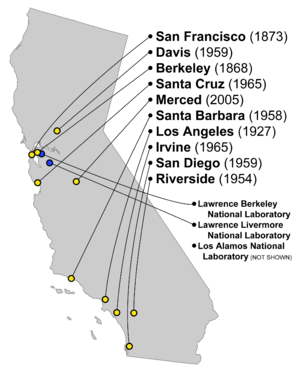
The University of California directly manages and operates one United States Department of Energy National Laboratory:
UC is a limited partner in two separate private companies that manage and operate two other Department of Energy national laboratories:
- Los Alamos National Laboratory (LANL) ( Los Alamos, New Mexico) operated by Los Alamos National Security, LLC.
- Lawrence Livermore National Laboratory (LLNL) ( Livermore, California) operated by Lawrence Livermore National Security, LLC.
Laboratory missions
Lawrence Berkeley National Laboratory conducts unclassified research across a wide range of scientific disciplines with key efforts in fundamental studies of the universe; quantitative biology; nanoscience; new energy systems and environmental solutions; and the use of integrated computing as a tool for discovery.
Lawrence Livermore National Laboratory uses advance science and technology to ensure that the US’s nuclear weapons remain reliable. LLNL also has major research programs in supercomputing and predictive modeling, energy and environment, bioscience and biotechnology, basic science and applied technology, counter proliferation of weapons of mass destruction, and homeland security. It is also home to the most powerful supercomputers in the world.
Los Alamos National Laboratory focuses most of its work on ensuring the reliability of the US's nuclear weapons. Other work at LANL involves research programs into preventing the spread of weapons of mass destruction and US national security, such as protection of the US homeland from terrorist attack.
The UC's ties to the three laboratories have occasionally sparked controversy and protest, because all three laboratories have been intimately linked with the development of nuclear weapons. During the World War II Manhattan Project, Lawrence Berkeley Lab developed the electromagnetic method for separation of uranium isotopes used to develop the first atomic bombs. The Los Alamos and Lawrence Livermore labs have been involved in designing the nation's nuclear weapons from inception until the shift into stockpile stewardship after the close of the Cold War.
Historically the two national laboratories in Berkeley and Livermore named after Ernest O. Lawrence, have had very close relationships on research projects, as well as sharing some business operations and staff. In fact, LLNL was not officially severed administratively from LBNL until the early 1970s. They also have much deeper ties to the university than the Los Alamos Lab, a fact seen in their respective original names; the University of California Berkeley Radiation Laboratory and the University of California Radiation Laboratory at Livermore.
Los Alamos and Lawrence Livermore
The University of California's ties to the labs have so far outlasted all periods of internal controversy. However, in 2003, the U.S Department of Energy for the first time opened the Los Alamos National Laboratory (LANL) contract for bidding by other vendors. UC entered into a partnership with Bechtel Corporation, BWXT, and the Washington Group International, and together they created a private company called Los Alamos National Security, LLC (LANS). The only other bidder on the LANL contract was a Lockheed-Martin Corporation-created company that included, among others, the University of Texas System. In December 2005, a seven-year contract to manage the laboratory was awarded to the Los Alamos National Security, LLC. [52]
On June 1, 2006, the University of California ended its direct involvement in operating Los Alamos National Laboratory, and management control of the laboratory was taken over by Los Alamos National Security, LLC. Approximately 95% of the former 10,000 UC employees at LANL were rehired by LANS to continue working at LANL.
On October 1, 2007, the University of California ended its direct involvement in operating the Lawrence Livermore National Laboratory. Management control of the laboratory was taken over by Lawrence Livermore National Security, LLC, a limited liability company whose members are Bechtel National, the University of California, Babcock and Wilcox, the Washington Division of URS Corporation, Battelle Memorial Institute, and The Texas A&M University System.
Other than UC appointing three members to the two separate board of directors (each with eleven members) that oversee LANS and LLNS, UC now has virtually no responsibility or direct involvement in either LANL or LLNL. UC policies and regulations that apply to UC campuses and the Lawrence Berkeley National Laboratory in California no longer apply to LANL and LLNL, and the LANL and LLNL Directors no longer report to the UC Regents or UC Office of the President.
High-performance networking
The University of California is a founding and charter member of CENIC, the Corporation for Education Network Initiatives in California, the nonprofit organization which provides extremely high-performance Internet-based networking to California's K-20 research and education community.
Other national research centers
The University of California also works with the NASA Ames Research Center at Moffett Federal Airfield in California. In September 2003, a ten-year contract valued at more than US$330 million was awarded to the UC to establish and operate a University Affiliated Research Center (UARC) — the largest grant ever awarded the University. UC Santa Cruz manages the UARC for the University of California, with the goal of increasing the science output, safety, and effectiveness of NASA's missions through new technologies and scientific techniques. Since 2002, the NSF-funded San Diego Supercomputer Center at UC San Diego has been managed by the University of California, taking over for the previous manager, General Atomics.
Observatories
The University of California manages two observatories as a multi-campus research unit headquartered at UC Santa Cruz.
- Lick Observatory atop Mount Hamilton, in the Diablo Range just east of San Jose.
- Keck Observatory at the 4,145 meter (13,600 ft) summit of Mauna Kea in Hawai'i.
The Astronomy Department at the Berkeley campus manages the Hat Creek Radio Observatory in Shasta County.
Medical Centers and Schools
The University of California operates five medical centers throughout the state:
- UCLA Medical Center, comprising four distinct hospitals:
- Ronald Reagan UCLA Medical Center, in Los Angeles;
- Harbor–UCLA Medical Center, in West Carson;
- Olive View – UCLA Medical Center, in Sylmar; and
- Santa Monica – UCLA Medical Center, in Santa Monica;
- UCSD Medical Center, in San Diego; and
- UCSF Medical Center, in San Francisco.
Each medical center serves as the primary teaching site for that campus' medical school. All five programs are considered among the top tier of medical schools in the United States, with UCSF being a perennial fixture among the top five programs in both research and primary care and both UCLA and UCSD consistently ranking among the top fifteen research schools, according to the annual rankings published by U.S. News and World Report. [53] The teaching hospitals affiliated with each school are also highly regarded - both UCLA and UCSF's medical centers are in U.S. News and World Report's 2010-11 Honor Roll for Best Hospitals in the United States. [54]
In the latter half of the 20th century, the UC hospitals became the core of full-fledged regional health systems; they were gradually supplemented by many outpatient clinics, offices, and institutes. Three UC hospitals are actually county hospitals which were sold to UC, which means that UC has come to play a major role in providing healthcare to the indigent. The medical hospitals operated by UC Irvine (acquired in 1976), UC Davis (acquired in 1978), and UC San Diego (acquired in 1984), each began as the respective county hospitals of Orange County, Sacramento County, and San Diego County.
UC Extension
For over a century, the University has operated a continuing education program for working adults and professionals. At present, UC Extension enrolls over 500,000 students each year in over 17,000 courses. One of the reasons for its large size is that UC Extension is a dominant provider of Continuing Legal Education and Continuing Medical Education in California. For example, the systemwide portion of UC Extension (directly controlled by the UC Office of the President) operates Continuing Education of the Bar under a joint venture agreement with the State Bar of California.
UC Agriculture and Natural Resources
The University of California division of Agriculture and Natural Resources plays an important role in the State's agriculture industry, as mandated by the UC's legacy as a land-grant institution. In addition to conducting agriculture research, every county in the state has a field office with county farm advisors. The county offices also support 4-H programs and have nutrition, family and consumer sciences advisors who assist local government.
UC Natural Reserve System
The NRS was established in January 1965 to provide UC faculty with large areas of land in which they could conduct long-term ecosystem research without having to worry about outside disturbances like tourists. Today, the NRS manages 35 reserves which together encompass more than 130,000 acres (530 km2).
Travel and conference facilities
- UC Berkeley's Cal Alumni Association operates travel excursions for alumni (and their families) under its "Cal Discoveries Travel" brand (formerly BearTreks); most of the tour guides are Berkeley professors. CAA also operates the oldest and largest alumni association-run family camp in the world, the Lair of the Golden Bear. Located at 5600 feet in beautiful Pinecrest, CA, the Lair is a home-away-from-home to almost 10,000 annual campers. Its attendees are largely Cal alumni and their families, but the Lair is open to everyone.
- UCLA operates both its own on-campus hotel, the UCLA Guest House, and a lavish conference center at Lake Arrowhead. During the summer, the conference center hosts the Bruin Woods vacation programs for UCLA alumni and their families.
- The University Inn and Conference Center, located in downtown Santa Cruz, is owned and operated by UC Santa Cruz.
- The UC system's Education Abroad program has two foreign campuses to support UC students: California House in London and La Casa de la Universidad de California in Mexico City (the latter has been closed for several years, though). There is also a UC Washington Center in Washington, D.C.
University Airport
UC Davis operates the University Airport as a utility airport for air shuttle service in the contractual transportation of university employees and agricultural samples. It is also a public General Aviation airport. University Airport's ICAO identifier is KEDU.
Seaport
UC San Diego owns a seaport, the Nimitz Marine Facility, which is just south of Shelter Island on Point Loma, San Diego. The port is used as an operating base for all of its oceanographic vessels and platforms.
Other affiliated institutions
- University of California, Hastings College of the Law
- Kearney Research and Extension Center
- University of California Global Health Institute http://ucsgh.edu/
- UC Institute on Global Conflict and Cooperation http://igcc.ucsd.edu/
See also
- California Community Colleges
- California Master Plan for Higher Education
- California State University
- Colleges and universities
- University of California Natural Reserve System
- University of California Police Department
- University of California Press
- University of California Students Association
- Saanjh Sikh Scholarship
References
-
^ Constance M. Carroll, PhD (2010).
"Progress and Plans 2010-2011" (PDF). Retrieved 2010-11-30.
{{ cite web}}: Text "SDCCD" ignored ( help) - ^ Hastings has a unique relationship with the University of California. In 1878, when Justice Serranus Clinton Hastings gave $100,000 to the University of California to start the law school bearing his name, he imposed two conditions: (1) the school must remain in San Francisco near the courts and (2) it could not be governed by the Regents of the University of California. See: University of California, Hastings College of the Law#History. Thus, UC Hastings functions as an eleventh UC campus, one of two in San Francisco.
- ^ Harvey Helfand, University of California, Berkeley: An Architectural Tour and Photographs, (New York: Princeton Architectural Press, 2002), 6.
- ^ "Un campus junto al parque Warner". ABC. 1 February 2010. Retrieved 2010-03-05.
- ^ "Respaldo al campus de la Universidad de California". ABC. 5 February 2010. Retrieved 2010-03-05.
- ^ University of California, Office of the President, Press Release, September 28, 2005. [1]
- ^ "Nobel Laureates and Universities". The Nobel Foundation. 2008. Retrieved 2008-03-06.
- ^ University of California Cultural Resources – Libraries. Accessed January 26, 2008.
- ^ Schevitz, Tanya (12 February 2008). "UC criticized for poor governance, controls". San Francisco Chronicle. Retrieved 2008-02-12.
- ^ a b Tanya Schevitz & Todd Wallack (14 November 2005). "Free mansions for people of means: UC system spends about US$1 million yearly on upkeep". San Francisco Chronicle. p. A9.
- ^ See University of California Policy 2.725, "University-Provided Housing," 1 August 2009, 2, and University of California Business and Finance Bulletin G-45, "Implementing Requirements on Expenses Incurred in Support of Official Responsibilities of the President and Chancellors," 20 May 2008, 2.
- ^ Eleanor Yang-Su, "Regents OK Fox's housing exception, $20,000 allowance," San Diego Union-Tribune, 25 March 2010.
-
^
Jones, Carolyn (August 14, 2007). "Dynes quitting as head of UC– presided over compensation scandal" (Document).
San Francisco Chronicle.
{{ cite document}}: Unknown parameter|accessdate=ignored ( help); Unknown parameter|url=ignored ( help) - ^ "Dynes' tenure". San Francisco Chronicle. August 14, 2007. Retrieved 2008-02-09.
- ^ Schevitz, Tanya; Wallack, Todd (December 22, 2005). "Conflict of interest found for UC provost / Despite violations, she got paid leave and offer of new job". San Francisco Chronicle. Retrieved 2008-02-09.
- ^ Gordon, Larry (April 4, 2008). "New UC chief will start in June". Los Angeles Times. pp. B4.
-
^ Committee on Planning and Budget (May 2006). "Current Budget Trends and The Future of the University of California" (Document). University of California.
{{ cite document}}: Cite has empty unknown parameter:|version=( help); Unknown parameter|accessdate=ignored ( help); Unknown parameter|format=ignored ( help); Unknown parameter|url=ignored ( help) - ^ Paddock, Richard C. (6 October 2007). "Less to bank on at state universities". The Los Angeles Times. Retrieved 2007-10-06. [ dead link]
- ^ Egelko, Bob (November 3, 2007). "UC owes millions in refunds to students, appeals court rules". San Francisco Chronicle. Retrieved 2007-11-03.
- ^ "Bailey, A. (September 27, 2007). Regents Approve Plan to Increase Faculty Wages. Daily Nexus". Retrieved 2007-11-26. [ dead link]
- ^ "University of California. (October 1, 2007). Academic Salary Scales" (PDF). Retrieved 2008-08-08.
- ^ "UC Campuses". University of California. 13 August 2006. Retrieved 2008-03-06.
- ^ University of California Office of the President, Policy on Representation of the University on Letterhead and Business Cards, September 28, 1999.
- ^ State of California (2008). "California Education Code Section 92203". California Education Code. FindLaw. Retrieved 2008-03-06.
- ^ State of California (2008). "Education Code section 92201". California Education Code. FindLaw. Retrieved 2008-03-06.
- ^ Menaka Fernando, "UCLA name, L.A. lifestyle marketable overseas", The Daily Bruin, 5 April 2005.
-
^ University of California Office of the President. "UC Profile" (Document). University of California Office of the President.
{{ cite document}}: Cite has empty unknown parameter:|version=( help); Unknown parameter|accessdate=ignored ( help); Unknown parameter|format=ignored ( help); Unknown parameter|url=ignored ( help) -
^ Department of Information Resources and Communications (Fall2006). "Statistical Summary of Students and Staff" (Document). University of California.
{{ cite document}}: Check date values in:|date=( help); Cite has empty unknown parameter:|version=( help); Unknown parameter|accessdate=ignored ( help); Unknown parameter|format=ignored ( help); Unknown parameter|url=ignored ( help) - ^ UC Annual Endowment Report Office of the Treasurer of The Regents Retrieved March 31, 2010
-
^ Budget Office. "Annual Report" (Document). University of California.
{{ cite document}}: Cite has empty unknown parameter:|version=( help); Unknown parameter|accessdate=ignored ( help); Unknown parameter|format=ignored ( help); Unknown parameter|url=ignored ( help) - ^ "America's Best Colleges 2011". US News and World Report. 2011. Retrieved 2010-08-20.
- ^ Shanghai Jiao Tong University (2007). "Academic Ranking of World Universities". Institute of Higher Education, Shanghai Jiao Tong University. Retrieved 2009-05-24.
- ^ Division of Science Resources Statistics (2004). "Academic Institutional Profiles". National Science Foundation. Retrieved 2008-03-06.
-
^ "The Washington Monthly College Rankings 2010" (Document). The Washington Monthly. 2010.
{{ cite document}}: Unknown parameter|accessdate=ignored ( help); Unknown parameter|url=ignored ( help) - ^ UC Merced public relations dept (2007). "UC Merced Modifies Plans for Future Campus Development". UC Merced press release. Retrieved 2008-06-12.
- ^ "America's Best Graduate Schools: Medical Schools". USNews and World Report. 2010. Retrieved 2010-03-31.
- ^ California Sustainability Alliance, University of California, Received October 28th, 2010
-
^ Bruce C. Steele (29 August 2006).
"College made easy". The Advocate. Retrieved 2008-03-06.
{{ cite news}}: Unknown parameter|coauthors=ignored (|author=suggested) ( help) -
^ The Editors (17 April 2007).
"National Universities: College Rankings". The Washington Monthly. Retrieved 2008-03-06.
{{ cite news}}:|author=has generic name ( help) - ^ Tanya Schevitz, "UC Berkeley's lack of services leaves many undergrads to sink or swim: 'Little fish in a big pond,' " San Francisco Chronicle, 6 May 2001, A1.
- ^ Diane Curtis, "UC Charged With Research Before Teaching," L.A. Daily News, 13 May 1990, N4.
- ^ Renee Koury, "Cal Trying To Lighten Up," San Jose Mercury News, 18 August 1990, 1B.
-
^ "UC employees face furloughs, pay cuts". Burlington, Vermont: Burlington Free Press. 11 July 2009. pp. 1A.
{{ cite news}}:|first=missing|last=( help) - ^ 2007/LaborAtCal - calDisorientation
- ^ a b "Undergraduate Admissions: Local Eligibility". University of California. 31 May 2007. Retrieved 2008-03-06.
- ^ "The Master Plan Renewed" (PDF). University of California. July 1987. Retrieved 2009-04-09.
- ^ "Freshman admission of GTO students" (Press release). University of California Office of the President. Retrieved 2008-03-21.
- ^ Agha, Marisa (5 April 2007). "UC system fall '07 freshman admission numbers up". The Press Enterprise. Retrieved 2007-08-22.
- ^ "University of California. Admission by Exception" (PDF). Retrieved 2009-04-09.
- ^ "Comprehensive Review Factors for Freshman Applicants". Retrieved 2009-07-09. [ dead link]
- ^ "UC system fall '09 freshman admission numbers" (PDF). University of California.
- ^ Broad, William J. (22 December 2005). "California Is Surprise Winner in Bid to Run Los Alamos". New York Times. Retrieved 2008-02-10.
- ^ http://grad-schools.usnews.rankingsandreviews.com/best-graduate-schools/top-medical-schools
- ^ http://health.usnews.com/health-news/best-hospitals/articles/2010/07/14/best-hospitals-2010-11-the-honor-roll.html
Further reading
- Stadtman, Verne A. (1970). The University of California 1868-1968. New York: McGraw-Hill Book Co.
- Stadtman, Verne A. (1970). A Centennial Publication of the University of California. New York.
{{ cite book}}:|work=ignored ( help)CS1 maint: location missing publisher ( link)
External links
- Official Website
- Images of manuscripts held in the library of the University
- Will Parrish and Darwin Bond-Graham, CounterPunch, 1 March 2010, "Who Runs the University of California?"
-
Chisholm, Hugh, ed. (1911).
Encyclopædia Britannica (11th ed.). Cambridge University Press.
{{ cite encyclopedia}}: Missing or empty|title=( help)
37°52′19″N 122°16′00″W / 37.87192°N 122.26654°W [[Category:Education in California|University of California system]] [[Category:Educational institutions established in 1868|California, University of]] [[Category:Universities and colleges in California]] [[Category:University of California|*]] [[Category:Public university systems in the United States|California, University of]] [[Category:Association of Public and Land-Grant Universities]] [[Category:Schools accredited by the Western Association of Schools and Colleges]]
